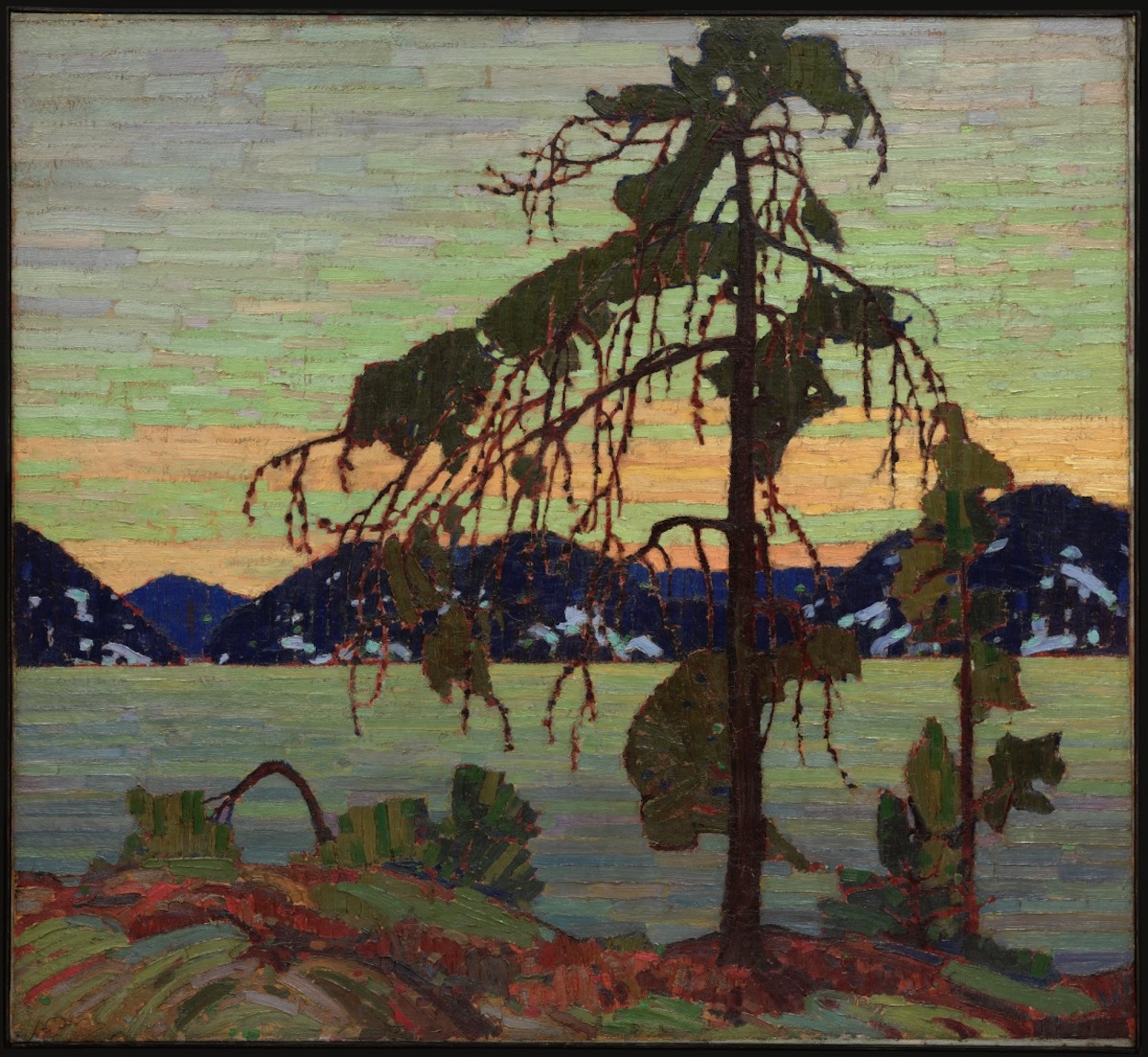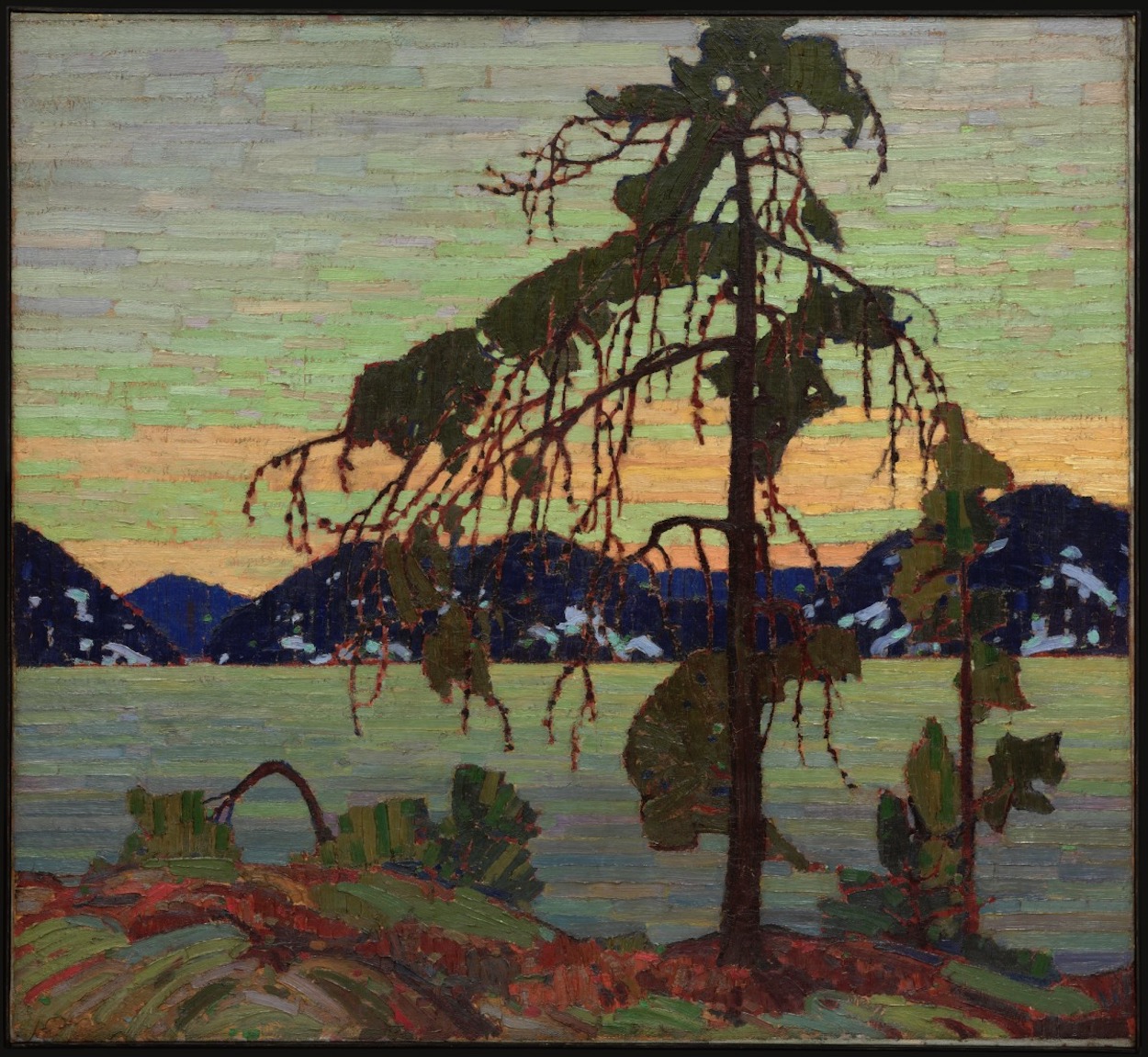We know we don't feature Canadian art too often. We are about to change that! :)
Born in 1877 near Toronto, Canada, Tom Thomson worked initially as a commercial artist where he interacted with future members of the Group of Seven who also started their careers as commercial artists. After becoming a full-time artist, he sketched in Algonquin Park, north of Toronto, during the summer, while working as a guide and forest ranger. In the winter, images were developed into larger studio paintings. The iconic Canadian wilderness painting The Jack Pine was completed in the spring of 1917 just before he tragically drowned in a canoeing accident. Had he survived, Thomson would have undoubtedly become a founding member of the Group of Seven. The National Gallery of Canada in Ottawa acquired the painting in 1918.
The rugged jack pine is shown off-center to the right and stands the full height of the canvas. The Art Nouveau sinuous tree branches form a semicircle through which we view the distant hills, sky, and lake. The semicircle is echoed on the left by a small branch between tree stumps left by loggers. The vermilion underpainting shows through in the branches and the rocks in the foreground and in the hills. The expressionistic evening sky comprised of horizontal ribbons of color is mirrored on the calm waters of the lake. The pine needle leaves are abstracted into large blobs like snow hanging on a tree branch. This is not the only abstraction made. Also missing from the wilderness scene are the first nation peoples, loggers, animals, and birds that populated the Park.
- Norman Clark
P.S. More mysticism in paintings you will find in the article Beyond the Stars – A Spiritual Journey of Artists.


 Tom Thomson
Tom Thomson